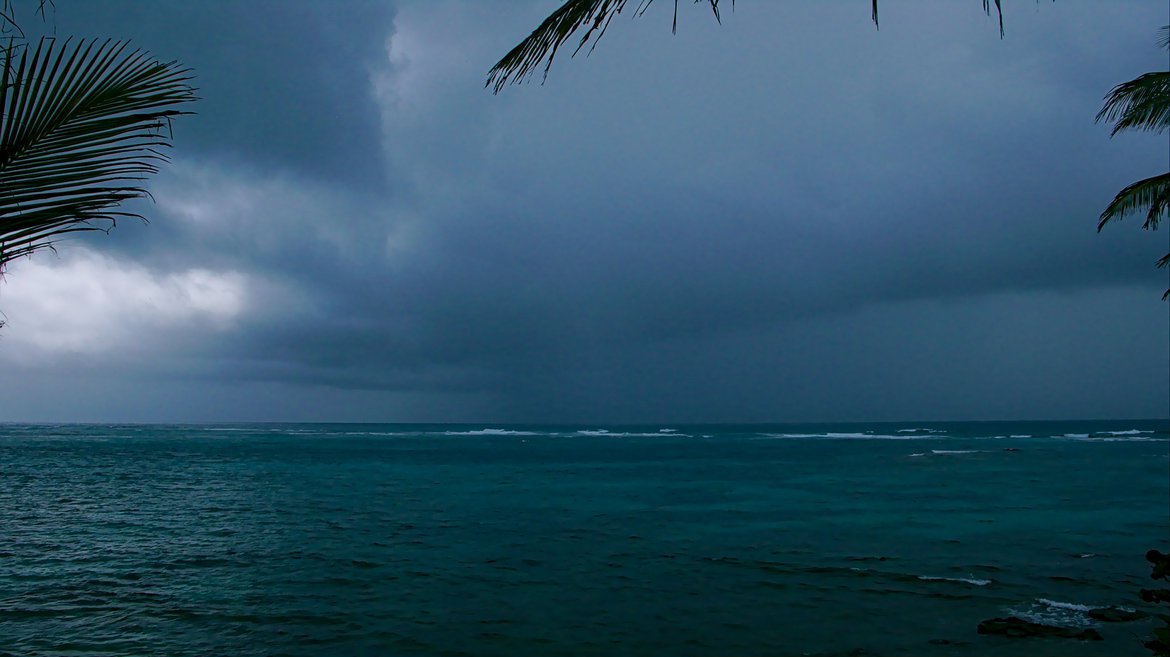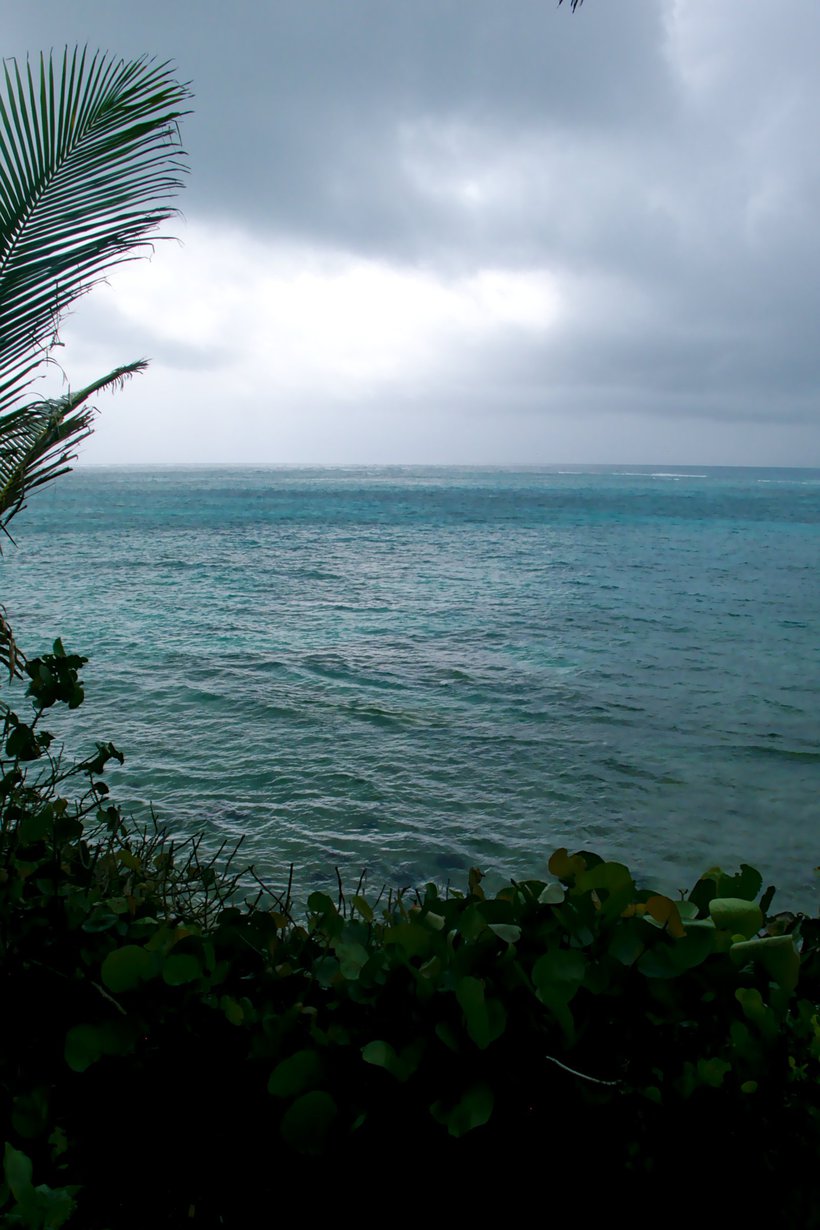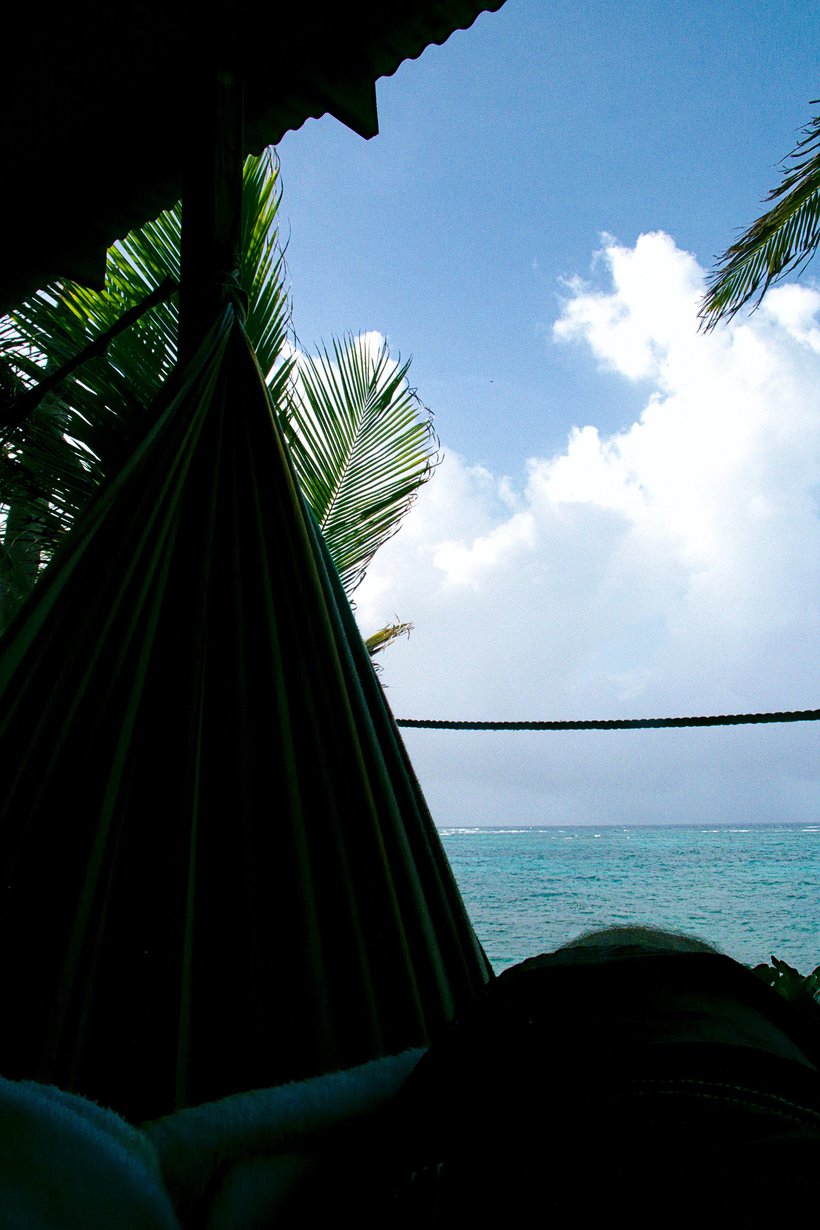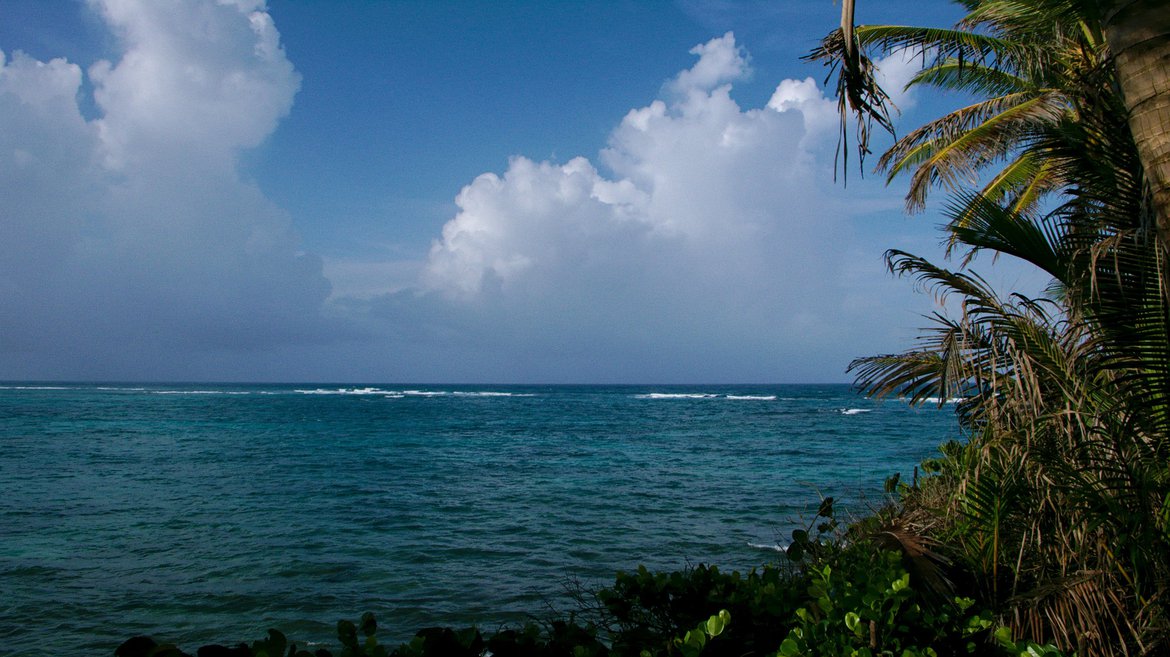You Can’t Go Home Again
The wind became constant on the second day, changing from the occasional gust that would precede an hour or two of torrential rains, to a steady 20-25 knot blow as if Zephuros himself were paying a visit to the island.
Once the wind became constant, silence retreated back to wherever silence goes in a world where squalls rule. At first you just notice the clattering palm leaves and of course the near deafening roar of the the rain on the tin roofs. Both mingle with the background of surf breaking just below the bluff where our cabin sits, facing east — to Cuba and the oncoming clouds.
When the rain comes it’s horizontal, making awnings and porches a useless defense. The only way to stay dry is either inside or pressed against the leeward side of a building.
The first time we came to Little Corn Island it was April, the tail end of the dry season. It rained once or twice, but never for more than five minutes and always followed by more sunshine.
This time it’s the end of June, just well into the wet season, and the island is an entirely different place.
Naturally I wasn’t really expecting it to be the same. I knew the weather would have changed, I knew the people we had met would be gone, save a few and I knew that it would be a different experience.
But I wasn’t entirely prepared for how different it would be.
When I first returned from Southeast Asia, I wrote that it was impossible to go back. That travel was singular and unrepeatable. My actual words were
You will want to hang on to things when they are perfect. You will want to stay in Vang Veing, a floating village, on an island lost at sea. You will want to return even after you have left. You will want things to be the same when you return. But they will not be the same.
For all the overly-dramatic certitude, that was just a theory. Being the son of a scientist I hate to spout untested hypotheses, but now we’ve tested it and I can definitively say that I was right — there is no going back. Going back must mean going again, otherwise it would imply that you, the place and everyone in it are static, fixed, immutable, and of course that simply isn’t the world we live in.
The danger in going again is that we will compare the present to the past and for some reason the present rarely fares well in that comparison.
So yes, you can go back, physically, but be prepared for something entirely different — for instance, here on Little Corn not only are the people different, but the very island has morphed and changed — the rain comes daily and the beaches are almost non-existent.
Ali, Little Corn’s self-appointed medicine man, tells me that the shifting tides pull much of the sand back out toward the reef and the considerably bigger waves breaking on the far side of the reef would seem to prove his point. Eventually, come December, the tides will shift again, bring the sand back in.
But in the mean time the island has literally shrunk. The beach where we spent most of our previous trip is now under two feet of water at high tide.
I was sitting up at the Casa Iguana restaurant area yesterday thinking about how much even places can change, not in a matter of years, but months, even days. The remarkable thing about traveling is that it’s not simply a matter of moving through space, it’s time as well.
In fact it might be one of life’s more undisguised illustrations of the intrinsic link between space and time.
Arriving somewhere is somewhat like a game of pool slowed down.
When one pool balls strikes another there is that infinitesimal period of time where the balls actually compress, changing shape as they transfer energy.
If you were to slow time and and magnify space sufficiently, you would see the balls compress as they touched — that minute moment of contracting and expanding, the transfer of force, the temporary mingling of color and atoms, the kaleidoscope of impact — somewhat akin to what it’s like to spend a week in one particular place.
You travel somewhere for a week, a month; you exist in that compressed space, impossible to observe from the outside, but very tangible and obvious within the kaleidoscope of the moment. Everything slows to near stop in relation to the outside world.
To an outside observer there is merely the impact, some photos on Flickr and the balls are already headed in opposite directions, vast expanses of blue-green felt suddenly between them. From the outside it looks like mere mechanics — people and places collide and some record of time is produced — but from the inside the experience is very different.
As the one-time champion of the Denver pool halls, Ramstead Gordon (who was later dethroned by no less than Neal Cassady), once said “This is not a game of physics, it’s a game of magic.” No two shots will ever be the same, no two or three or ten balls will ever cluster exactly the same way twice, no matter how similar they might seem from the outside.
Duplication is almost certainly impossible, why else would our culture be so obsessed with the things we can duplicate if not as some defense against the things we cannot?
So yes, as in pool, the places and experiences of travel are finite and you can never go back. But you can go again and bask in the changes because that’s part of what makes it so interesting — just don’t try to fight it.




Thoughts?
Please leave a reply:
All comments are moderated, so you won’t see it right away. And please remember Kurt Vonnegut's rule: “god damn it, you’ve got to be kind.” You can use Markdown or HTML to format your comments. The allowed tags are
<b>, <i>, <em>, <strong>, <a>. To create a new paragraph hit return twice.